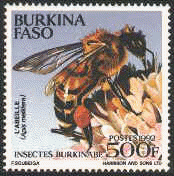The foraging behavior of the honey bee workers was investigated to show the effects of imidacloprid. By measuring the time interval between two visits at the same feeding site, we found that the normal foraging interval of honey bee workers was within 300 s. However, these honey bee workers delayed their return visit for >300 s when they were treated orally with sugar water containing imidacloprid. This time delay in their return visit is concentration-dependent, and the lowest effective concentration was found to be 50 μg/liter. When bees were treated with an imidacloprid concentration higher than 1,200 μg/liter, they showed abnormalities in revisiting the feeding site. Some of them went missing, and some were present again at the feeding site the next day. Returning bees also showed delay in their return trips. Our results demonstrated that sublethal dosages of imidacloprid were able to affect foraging behavior of honey bees.
By E. C. Yang, Y. C. Chuang, Y. L. Chen, and L. H. Chang
Journal of Economic Entomology 101(6):1743-1748. 2008

- Log in to post comments
